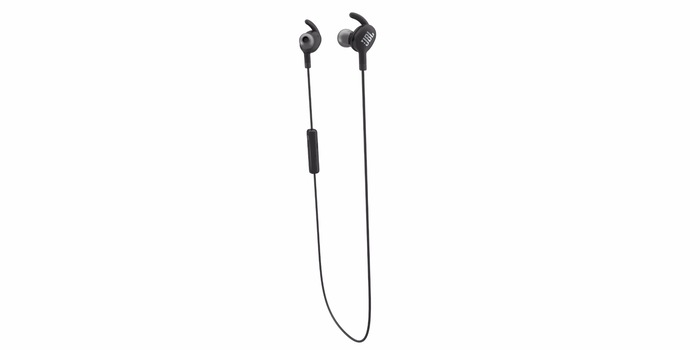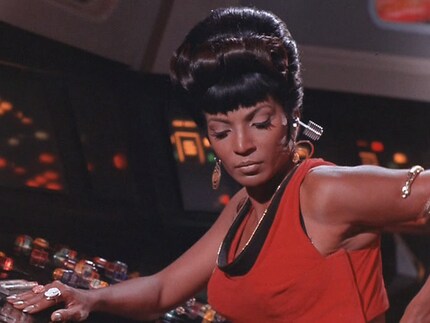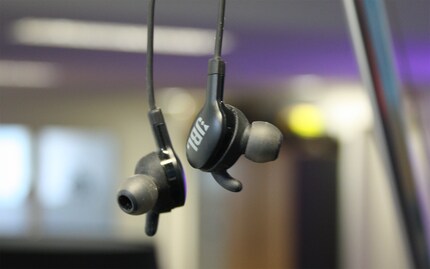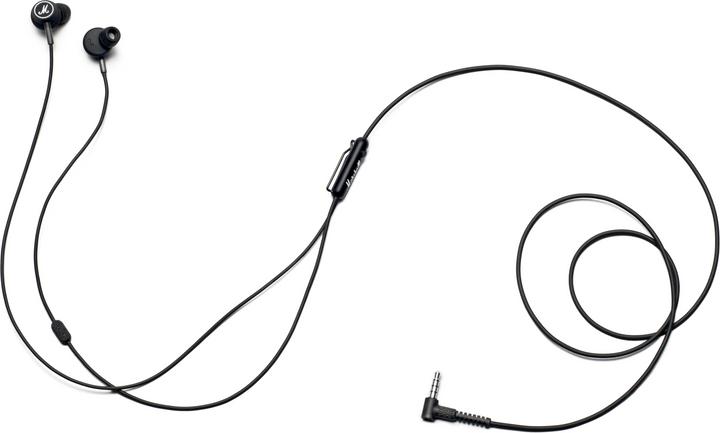

JBL Everest 100 - The wired wireless headphones
The world of wireless headphones is on the move. There is still no uniform standard that will dominate the market in the long term. The competition is not only between technologies, but also between designs. One of these is the JBL Everest 100: wireless headphones with a cable.
Wireless in the context of the JBL Everest 100 means that there is no cable connection between the audio player with Bluetooth transmission capacity and the headphones. But there is between the two in-ear headphones. This looks a little strange at first glance, but it has its advantages over wireless in-ear headphones, which really only consist of plugs.

The main advantage of this design is obviously that it offers manufacturers more space to accommodate technology - including in the cable harness. Because just like any system consisting of a transmitter and receiver, Bluetooth relies on antennas. Put simply, the following speaks in favour of the wired design:
- The larger the antenna, the better the reception
- The better the transmission power of the player, the better the reception
- The fewer obstacles between the transmitter and receiver, the better the reception
No matter how much technology the manufacturers want to fit into their earbuds, they won't get any more space. A human ear simply has a certain size and this cannot be changed without further ado. In addition, certain comfort factors must be adhered to, otherwise nobody will wear the earplugs. Then there are aesthetic guidelines and they shouldn't protrude too far out of the ear either, because then they'll get in everyone's way. Or you'll look like Nyota Uhura from Star Trek.

Exposition and explanation aside, let's talk about the JBL Everest 100. The cable gives them the advantage that controls from the earpiece modules can be located elsewhere. For example, the JBL Everest 100 have a small box near the right earbud that contains the device's battery, the on/off switch and two buttons for volume control.
Comfortable, but clunky
At first glance, the JBL Everest 100 are a little disconcerting. All my life, in-ear headphones have been a Y-shaped cable with two earbuds. But now it's U-shaped, in a form previously reserved for broken headphones. I'll probably have to get used to it, because the design does have its advantages.

A little chunky, but comfortable - the JBL Everest 100
Technologically speaking, the developers at JBL have utilised the space to accommodate the power cable and antenna in the cable harness. This makes a big difference, because the transmission of the music works without interference, unless you are moving in strong interference fields. Power lines, WiFi networks and satellite dishes can be among them. But it takes quite a lot of interference for the JBL Everest to fail. There are no seemingly random failures like with the Bragi Dash.
Another advantage I discovered is that, unlike the old-fashioned Y-shaped cable harnesses, the cable connection of the JBL Everest 100, like all headphones with a U-shaped design - I'll call them that now - can be made behind the head. Despite all the gesticulating and shopping I've done, I haven't yet managed to get the cable tangled up anywhere or pull one of the plugs out of my ear. This is much more relaxing in everyday life than I would have thought.
Despite the extra space provided by the cable connection, the earbuds are a little chunkier than I'm used to with my latest Y-style headphones.
However, the JBL Everest 100 sit well in the ear after being adjusted using the tips provided, even if they leave a noticeable gap in my ear. However, this makes no difference in everyday life, but every ear is built differently. The earplugs fit very well in the ear and no amount of headbanging to Swedish death metal - of course I tried that - could make the Everests fly out of my ear.
Saturated sound, as usual
JBL is a name with tradition. Founded in the USA by James B. Lansing after the Second World War, the company has made a name for itself with well-built speakers that also sound good. The Everest 100 is no exception. The test song for everything but bass was "Cosby Sweater" by Australian hip-hop combo Hilltop Hoods.
The sounds are clear, the voices distinct. I didn't really expect anything else from JBL, but I was a little sceptical because of the new design. This scepticism turned out to be completely unfounded.
As a bass test, I listened to "Faded" by Zhu in the remix by Odesza.
The bass sounds like a beat on a drum, muffled and rich. It reverberates, but doesn't shake anything. I've had headphones, both in-ear and cone-shaped, that were able to build up much more pressure on the bass, but also ones that are far below the performance of the JBL Everest 100.
The big but: Video
If you only listen to music with the JBL Everest 100, then you'll never notice this problem, which I'm citing as the big but in this article. But headphones need to be able to do more than just play music in modern everyday life. Sure, the series of functions about fitness tracking is not absolutely necessary, but the days when headphones were only used for music are over. And that's where the JBL Everest 100 fail.
The problem arises when you want to watch videos with the headphones. Because picture and sound will be asynchronous. The deviation between picture and sound is not large, but enough to make videos such as TED talks or top 10 lists seem disturbing. And this latency is hugely distracting.
Recommended for music fans
Solidly built and good sounding, the JBL Everest are certainly a pair of headphones that will guarantee music enjoyment. They sit comfortably and firmly in the ear. They sound rich, but are not among the top headphones when it comes to bass. However, I have to mention here that I am a big fan of bass and pay particular attention to it.
The Everests will fail with videos for the time being, as the image and sound will be asynchronous. According to information from the JBL support team, this latency can be between one and two seconds.
But those who only listen to music will be well served with the JBL Everest 100.
Journalist. Author. Hacker. A storyteller searching for boundaries, secrets and taboos – putting the world to paper. Not because I can but because I can’t not.

